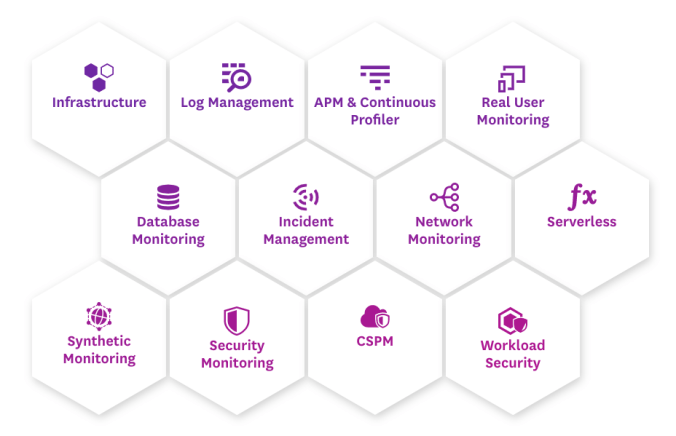I am a huge fan of David Gardner. David Gardner is one of the co-founders of The Motley Fool, a popular investing advice newsletter. Gardner in particular is known for investing in rule breakers, or companies that are disrupting industries. Some of David’s best picks including choosing Amazon and Netflix early on.
David has six traits that he looks for when investing in disruptive companies.
Top Dog and First Mover in an Important, Emerging Industry
Sustainable Advantage Gained Through Business Momentum, Patent Protection, Visionary Leadership, or Inept Competitors
Strong Past Price Appreciation
Good Management and Smart Backing
Strong Consumer Appeal
Grossly Overvalued According to the Financial Media
In particular the 3rd trait above I think is worth higlighting. Why does David look for strong past price appreciation? Because winners keep on winning. All too often investors think they missed out and a stock cannot go any higher…how often have you thought that Apple or Amazon could not possibly go any higher? While it is not easy to find the next Apple or Amazon, do not let strong past price appreciation get in the way of your investment success.
Many of my picks below share some of the traits highlighed above. I believe that despite strong past price appreciation, many of my below favorite picks for 2022 (and beyond) will continue to outperform:
Datadog - Datadog is a monitoring and analytics tool that allows companies to understand how their applications are performing in real time. IT teams can monitor their entire infrastructure from one central place. Like other SaaS companies, Datadog has expanded their portfolio and product line through acquisitions and R&D. Datadog exemplifies what every investor in a SaaS companies looks for. Accelerating revenue growth, high dollar-based net retention ratio, positive free cash flow, growing margins and large growth in enterprise customers. Datadog as a business is performing exceptionally under founder-led CEO Olivier Pomel. Datadog’s most direct competitors are not performing as well as evidenced by New Relic’s founding CEO stepping down in May 2021, Splunk’s CEO resigning in November 2021 and languishing stock prices. Datadog’s most recent Q3 earnings result for the calendar quarter ending September, 30 the company posted:
Revenue up 75% YoY
Positive operating cash flow of $67.4 million and FCF of $57.1 million
Customers with ARR of $100,000 or more up 66% YoY
Announces 10 new product launches
Datadog’s continued innovation and product lead are apparent when looking at the services offered. Previously the layout only had one row and now there are three rows:
Snowflake - Snowflake is one of several companies riding both the trend in the volume of data being created and companies increasing desire to centralize their data for analyticlal purposes. Snowflake compiles data from multiple data lakes and places it into a data warehouse where businesses can more easily analyze and make use of the data. Snowflake’s CEO is not founder-led like Datadog, but is run by legendary tech veteran Frank Slootman who came out of retirement to become CEO of Snowflake. There are many articles written about Snowflake such as this great article from Public Comps and this one from Forbes about Slootman if interested to learn more. Importanly, Snowflake is not a SaaS business but rather a consumption-based so the company earns more when its customers use Snowflake’s products more. Looking at Snowflake’s most recent earnings report Q3 FY22 (for the calendar quarter ending October 31, 2022) the company is clearly executing at a high level:
Product revenue up 110% YoY
Remaining performance obligations up 94%
Net revenue retention rate astonishingly high at 173%
Large customers with $1 million+ spend now at 148
Lastly look at the volume of data that has been created and is expected to increase between now and 2025. Statista estimates that the amount of data/information created, captured, copied, and consumed in 2025 will be 181 zetabytes, equal to equal to one sextillion bytes or 10^21 bytes. This a 90x increase since 2010. Clearly Snowflake is operating in the right industry:

Zscaler - Zscaler is a leader in cybersecurity. Cybersecurity is certainly a hot industry and Zscaler has been posting impressive numbers lately. Run by the founder Jay Chaudhry, Zscaler has risen to be one of the leaders in Zero Trust and Secure Access Server Edge (SASE). Zero Trust is a very important concept in cybersecurity. Zero Trust is a network security model where no user or device is ever granted access to a company’s network without validating their identity. No one is trusted by default whether they are inside or outside the network. Never trust and always verify. Zscaler has an impressive customer list that including companies such as GE, Siemens, Air France and Paychex. Importantly Zscaler is very sticky because it is the backbone of a company’s enterprise network. The company runs the Zero Trust Exchange, which claims to handle 200 billion requests and prevents 7 billion incident and policy violations per day according to the company’s November 2021 IR presentation. The company has 150 POPs, or point-of-presences, across the globe that help reduce latency. In the company’s most recent earnings report:
Revenue up 62% YoY and 17% QoQ
Billings up an impressive 71%
Net retention ratio of 128%
Customers with $1 million+ ARR up 87% YoY
Zscaler was ranked the clear leader in Secure Web Gateways in Gartner’s Magic Quadrant in December 2020:

Mercado Libre - Mercado Libre is Latin America’s most dominant e-commerce company. The company’s goal is to “democratize commerce.” Run by co-founder and CEO Marcos Galperín, MercadoLibre has a long track record of operational success. Mercado Libre, similar to Amazon, started out as purely an e-commerce company but has since branched out to offer other services (although it does not offer a cloud computing service). Mercado Libre’s core offering is Marketplace, an online platform for buying and selling merchandise. Other services include a logistics service that helps merchant to ship orders, an advertising solution that lets companies advertise their products on the Marketplace, and a fintech platform Mercado Pago that primarily acts as a secure payment method but has since grown to include other products like a money market fund, digital wallet and prepaid debit card. Mercado Pago is arguably the more exciting business given its higher growth and optionality to add more products.
Billings up an impressing 71%
Net retention ratio of 128%
Customers with $1 million+ ARR up 87% YoY
While there has some been some improvement in providing banking services to Latin America countries according to this report from Americas Market Intelligence, an estimated 75% of in-store retail payments are still face-to-face. Below is a list of all the current Mercado Pago product offerings:

Source: Mercado Libre Investor Relations Blackstone Real Estate Income Trust - Blackstone Real Estate Income Trust (BREIT) should be on every investor’s radar. BREIT is the world’s largest, perpetual-life, public non-traded REIT. BREIT was launched in 2017 to provide direct access to Blackstone’s real estate platform. While the fund is targeted primarily towards “income-focused investors”, the ITD (inception to date) return since launching in 2017 is 13.14% and the total return November 2021 YTD is 27.55%. BREIT’s 2021 YTD return is roughly on par with the S&P 500’s 2021 performance. Many retail investors are underweight real estate yet it is the largest asset class in the world. Many economists are predicting elevated inflation next year and the Fed has already signified 3 rate hikes in 2022. BREIT’s NAV is currently $48 billion and raises $2-$3 billion per month. The portfolio holds 2,226 properties and is diverisfied across both geographies and property types. Within property types, BREIT has the largest property type weightings in residential and industrial - two of the hottest performing subsectors within real estate over the last few years. If you are concerned about inflation or worried about stock market volatility in 2022 then BREIT may be a solid choice. Below is a snapshot of BREIT’s portfolio as of September 30, 2021:

Source: BREIT Fact Card



